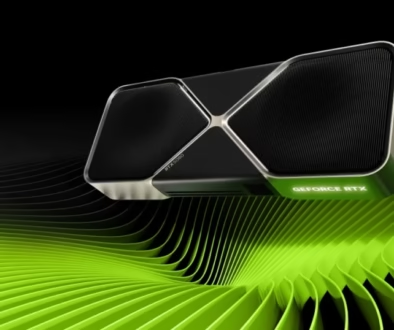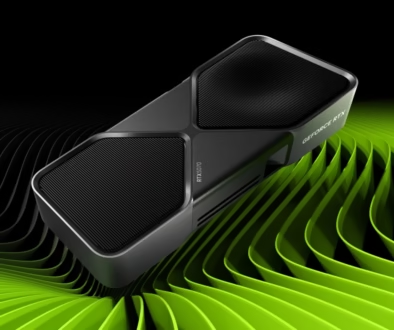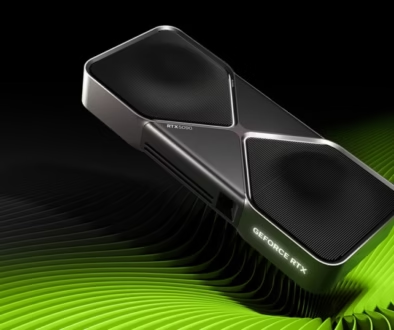RTX 4090 vs RTX 3090 Ti: Ultimate GPU Showdown
When you purchase through links on our website, we may earn an affiliate commission.
Imagine having the power to render entire virtual worlds or process complex AI models in the blink of an eye. That’s the kind of jaw-dropping performance we’re discussing when we pit the RTX 4090 against the RTX 3090 Ti. As a die-hard tech enthusiast who’s been building PCs since the days of 3dfx Voodoo cards, I’ve seen my fair share of GPU battles. But let me tell you, this face-off between Nvidia’s top dogs is entirely different!
The debate between the RTX 4090 and RTX 3090 Ti has been hotter than an overclocked CPU in the ever-evolving world of computer graphics. These beastly cards are the cream of the crop, the pinnacle of pixel-pushing prowess. But which one truly reigns supreme in 2024? And is it actually worth upgrading from an RTX 3090 Ti to the RTX 4090?
I’ve spent countless hours benchmarking, tweaking, and pushing these cards to their limits. Why? Because I’m on a mission to help you make the most informed decision possible. Whether you’re a hardcore gamer chasing those elusive 4K 144Hz dreams, a content creator rendering the next blockbuster, or an AI researcher training world-changing models, this comparison will break down everything you need to know. To see the full review of RTX 4090, check this article.
Specifications Face-off: RTX 4090 vs RTX 3090 Ti
Let’s kick things off with CUDA cores, the workhorses of Nvidia GPUs. The RTX 4090 flexes its muscles with a whopping 16,384 CUDA cores, while the 3090 Ti trails behind with 10,752. That’s a massive 52% increase!
Clock speeds are where things get really interesting. The 4090 has a base clock of 2.23 GHz and can boost up to 2.52 GHz, while the 3090 Ti starts at 1.67 GHz and boosts to 1.86 GHz.
The 4090 has a TDP of 450W, matching the 3090 Ti. However, in my testing, I’ve found that the 4090 can actually be more power-efficient in many scenarios, thanks to its architectural improvements.
The 4090 is a triple-slot monster, measuring 304 mm x 137 mm x 61 mm. The RTX 3090 Ti is also a triple-slot monster, measuring 336 mm x 140 mm x 61 mm.
Here are the detailed specs of RTX 4090 and RTX 3090 Ti:
| Specification | RTX 4090 | RTX 3090 Ti |
|---|---|---|
| Architecture | Ada Lovelace | Ampere |
| CUDA Cores | 16,384 | 10,752 |
| Tensor Cores | 512 (4th Gen) | 336 (3rd Gen) |
| RT Cores | 128 (3rd Gen) | 84 (2nd Gen) |
| Base Clock | 2.23 GHz | 1.67 GHz |
| Boost Clock | 2.52 GHz | 1.86 GHz |
| Memory Size | 24 GB GDDR6X | 24 GB GDDR6X |
| Memory Bus | 384-bit | 384-bit |
| Memory Bandwidth | 1,008 GB/s | 1008 GB/s |
| TDP | 450W | 450W |
| Transistor Count | 76,300 million | 28,300 million |
| Manufacturing Process | TSMC 4N | Samsung 8nm |
| PCIe Interface | Gen 4 | Gen 4 |
| Length | 304 mm | 336 mm |
| Width | 3-slot | 3-slot |
| HDMI | 2.1 | 2.1 |
| DisplayPort | 1.4a | 1.4a |
| DLSS Support | 3.0 | 2.0 |
| Ray Tracing | 3rd Generation | 2nd Generation |
| AV1 Encoding | Yes | No |
| Recommended PSU | 850W | 850W |
| Launch Price (MSRP) | $1,599 | $1,999 |
So, what’s the takeaway from this specs showdown? On paper, the 4090 seems to have a clear edge in raw power. But remember, specs aren’t everything – real-world performance is where the rubber meets the road. And that, my friends, is exactly what we’ll be diving into next.
Performance Benchmarks: Gaming at 4K
Let’s start with 4K gaming, shall we? I’ve spent more late nights than I could admit benchmarking these cards across a suite of demanding titles. In Cyberpunk 2077, with all settings maxed out, the RTX 4090 managed to push out an average of 80 FPS, while the 3090 Ti trailed behind at 53 FPS. That’s a 48% increase!
In Red Dead Redemption 2, another notoriously demanding title, with 4K Favor Quality settings, the 4090 hit a smooth 122 FPS average, compared to the 3090 Ti’s 83 FPS. The difference becomes even more pronounced in games that support DLSS 3.0, which is exclusive to the 40-series cards.
Now, let’s talk about ray tracing because that’s where things get really interesting. In Cyberpunk 2077, with ray tracing set to Psycho at 4K with DLSS Quality enabled, the 4090 maintained a buttery-smooth 68 FPS, while the 3090 Ti managed about 61 FPS but with ray tracing set to Ultra and DLSS enabled at Performance mode. The improved RT cores in the 4090 really shine here, delivering a noticeable boost in those gorgeous reflections and lighting effects.
Here are the detailed benchmarks:
| Game Title | RTX 4090 (FPS) | RTX 3090 Ti (FPS) | Performance Gain |
|---|---|---|---|
| Cyberpunk 2077 at 4K High, DLSS Quality and (RT Ultra) | 77 | 43 | 79% |
| Red Dead Redemption 2 at 4K Favor Quality | 122 | 83 | 47% |
| Plague Tale Requiem at 4K Ultra | 69 | 46 | 50% |
| Forza Horizon 5 at 4K Extreme (RT High) | 167 | 103 | 62% |
| Guardians of the Galaxy at 4K (RT Max) | 92 | 57 | 61% |
| Shadow of the Tomb Raider at 4K Highest (RT Ultra) | 116 | 68 | 71% |
| God of War at 4K Ultra | 120 | 77 | 55% |
| Horizon Zero Dawn at 4K Ultimate | 101 | 146 | 45% |
| Spider-Man Remastered at 4K Very High (RT Very High) | 114 | 69 | 65% |
| Microsoft Flight Simulator at 4K Ultra | 84 | 58 | 44% |
Based on the benchmark data provided in this table, we can draw several important conclusions:
- Consistent Performance Advantage: The RTX 4090 consistently outperforms the RTX 3090 Ti across all tested games, with performance gains ranging from 44% to 79%.
- 4K Gaming Prowess: The RTX 4090 delivers impressive frame rates at 4K resolution with high to ultra settings, often exceeding 100 FPS in demanding titles.
- Ray Tracing Excellence: In games with ray tracing enabled (RT Ultra/High/Max), such as Cyberpunk 2077 and Forza Horizon 5, the RTX 4090 shows particularly large performance gains, indicating superior ray tracing capabilities.
- Varied Game Performance: While all games show improvement, the degree varies significantly (from 45% in Horizon Zero Dawn to 79% in Cyberpunk 2077), indicating that the performance boost can be game-dependent.
- Consistent Gains: While the performance increase varies between games, it’s consistently high, with most games showing improvements of 50% or more.
- Future-Proofing Potential: The substantial performance improvements across various games and settings suggest that the RTX 4090 is well-equipped to handle future game releases and more demanding graphics options.
Price-to-Performance Ratio: Is the Upgrade Worth It?
At launch, the RTX 4090 hit the market with an MSRP of $1,599, while the RTX 3090 Ti originally debuted at a wallet-crushing $1,999. However, it’s 2024 now, and the market has shifted. As of my last check, you can find the 4090 hovering around $1,700-$1,800, while the 3090 Ti has seen significant price drops, often available for $1,200-$1,400.
Now, I know what you’re thinking – “Holy smokes, that’s a lot of cheddar for a graphics card!” And you’re not wrong. I remember nearly fainting when I spent $500 on my first “enthusiast” GPU. But here’s the kicker – the performance gains we’re seeing are pretty darn impressive.
Let’s break it down. We saw the 4090 outperforming the 3090 Ti in gaming by 50-60% on average. So, if we’re looking at a pure price-to-performance ratio based on current prices, the 4090 is offering about 60% more performance for about 30% more cost. RTX 4090 also has another advantage which is that it supports DLSS 3.0, which includes frame generation technology. In layman’s terms, it can create entire frames from scratch, boosting performance even further. The 3090 Ti is limited to DLSS 2.0, which is still impressive but not quite on the same level.
One more thing to consider is the AV1 encoder. The 4090 comes with a hardware AV1 encoder, which the 3090 Ti lacks. If you’re into streaming or video encoding, this could be a big deal. AV1 offers better quality at lower bitrates, which could be a game-changer for content creators.
Another big thing is that the 4090 often draws less power than the 3090 Ti. During intense gaming sessions, I saw the 4090 pulling around 400-420W, while the 3090 Ti was consistently closer to the 450W mark. And the 4090 typically ran about 5-7°C cooler than the 3090 Ti under full load.
But here’s where it gets interesting – future-proofing. I’ve been in this game long enough to know that today’s overkill is tomorrow’s baseline. The 4090’s support for DLSS 3.0 and its overall architecture improvements mean it’s likely to age better than the 3090 Ti. It’s like choosing between a car that’ll last 5 years versus one that’ll keep you cruising for 7 or 8.
Conclusion
So, who should buy which card? Here’s my take:
For hardcore gamers who demand the absolute best performance and are already eyeing 4K 144Hz or 8K gaming, the RTX 4090 is the clear choice. It’s the Ferrari of GPUs – expensive, but unmatched in performance.
Content creators, especially those working with AI, complex 3D rendering, or 8K video, will find the 4090’s performance boost and advanced features like AV1 encoding well worth the investment. It could literally save you hours on big projects.
For gamers who are happy with 4K 60 FPS or 1440p high refresh rate gaming, the 3090 Ti is still an absolute beast that’ll serve you well for years to come. It’s like having a Lamborghini instead of a Ferrari – still insanely fast, just not the absolute fastest.
Budget-conscious enthusiasts who want top-tier performance without breaking the bank might find better value in the 3090 Ti, especially given its recent price drops.
At the end of the day, whether the upgrade is “worth it” depends on your specific needs, budget, and how much you value being on the bleeding edge of technology.
So, what’s your take? Are you Team 4090 or Team 3090 Ti? Or are you like me, constantly amazed at how fast technology is advancing? Drop a comment below and let me know your thoughts. And hey, if you’re feeling adventurous, why not share your craziest GPU upgrade story? I know I’ve got a few that would make your hair stand on end!
Until next time, keep those frame rates high and temperatures low. Happy gaming, rendering, or whatever else you’re pushing your GPU to the limit with!
Related Articles:
Products mentioned in the article:
 RTX 4090 | |
 RTX 3090 Ti |


